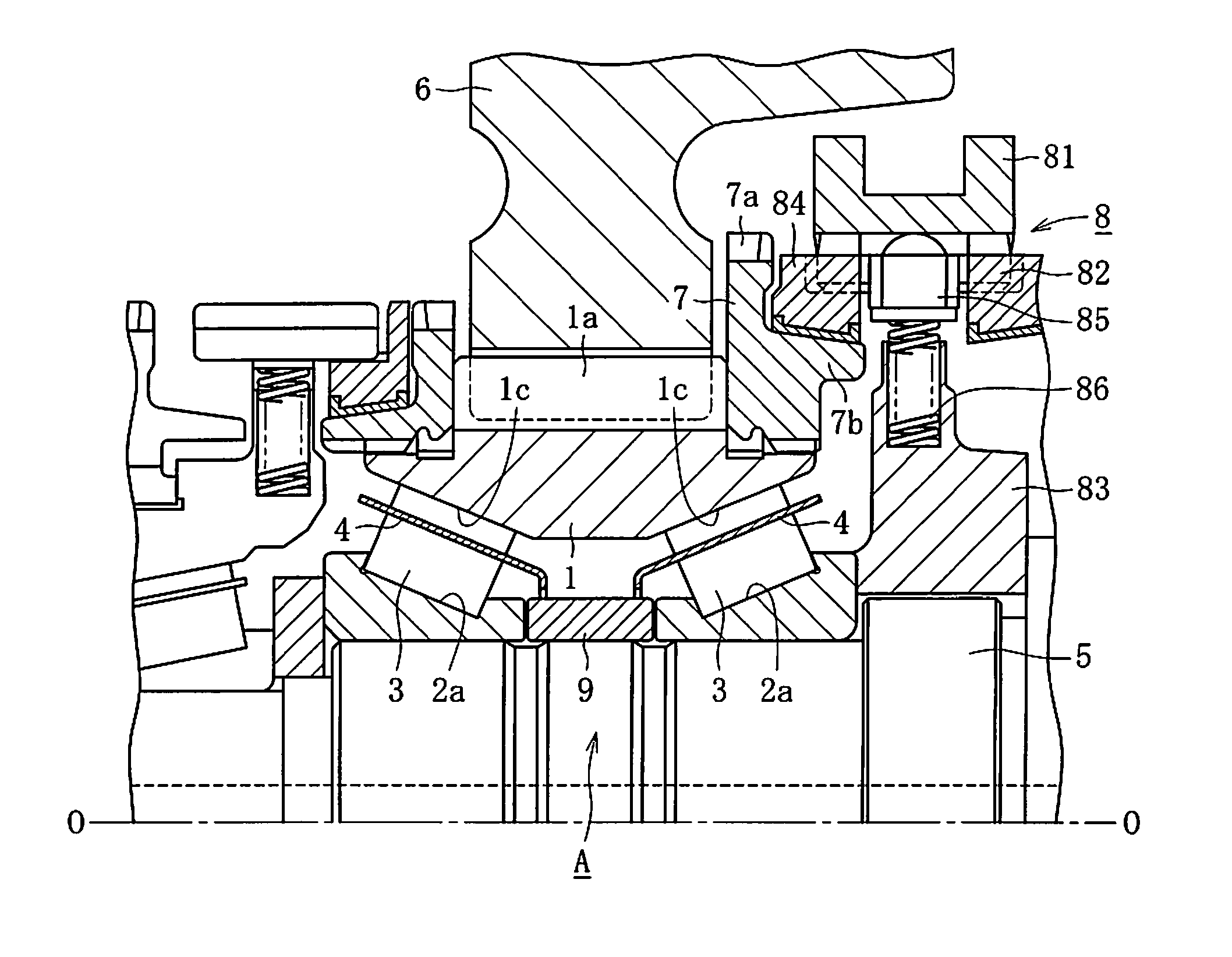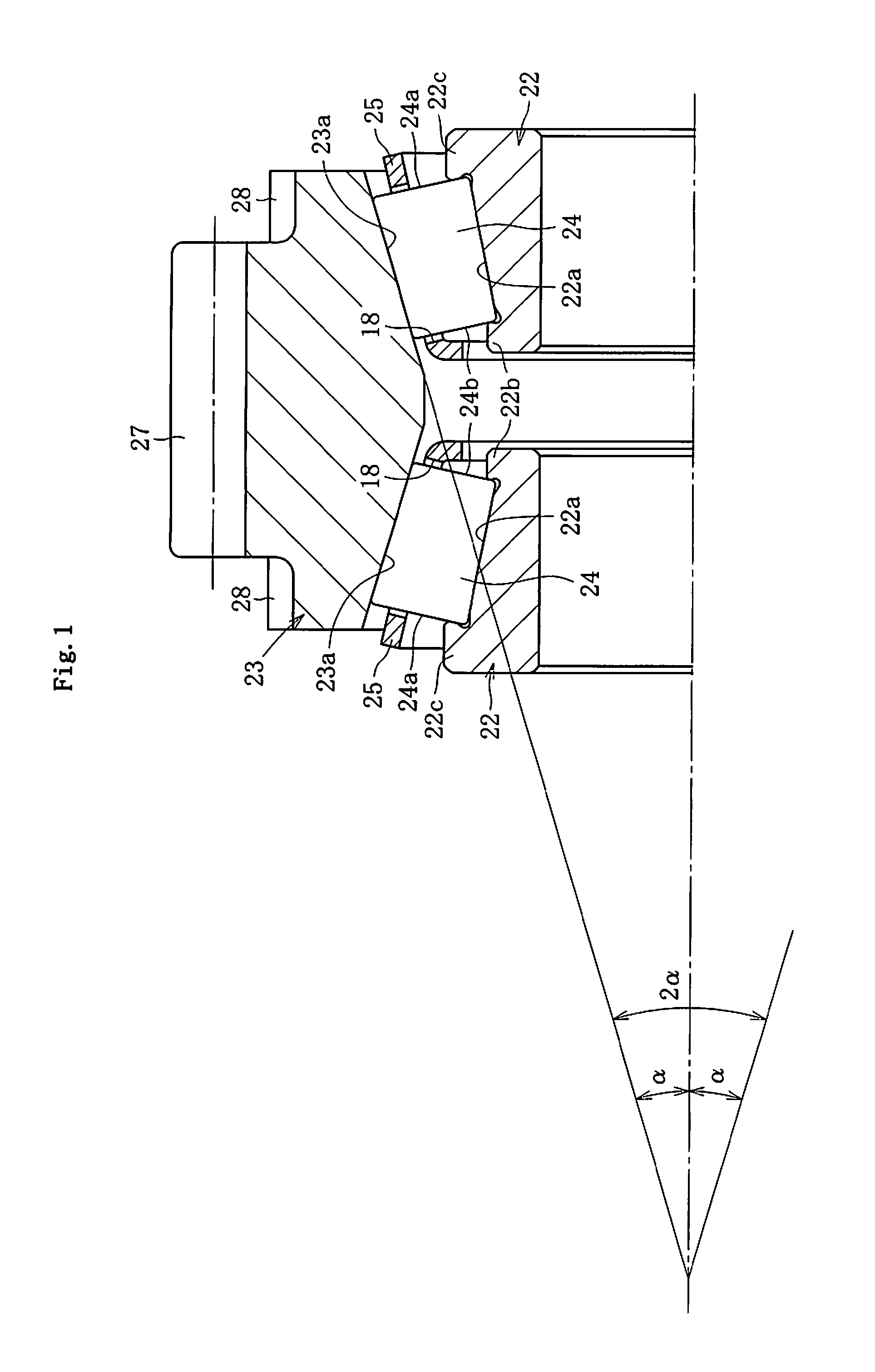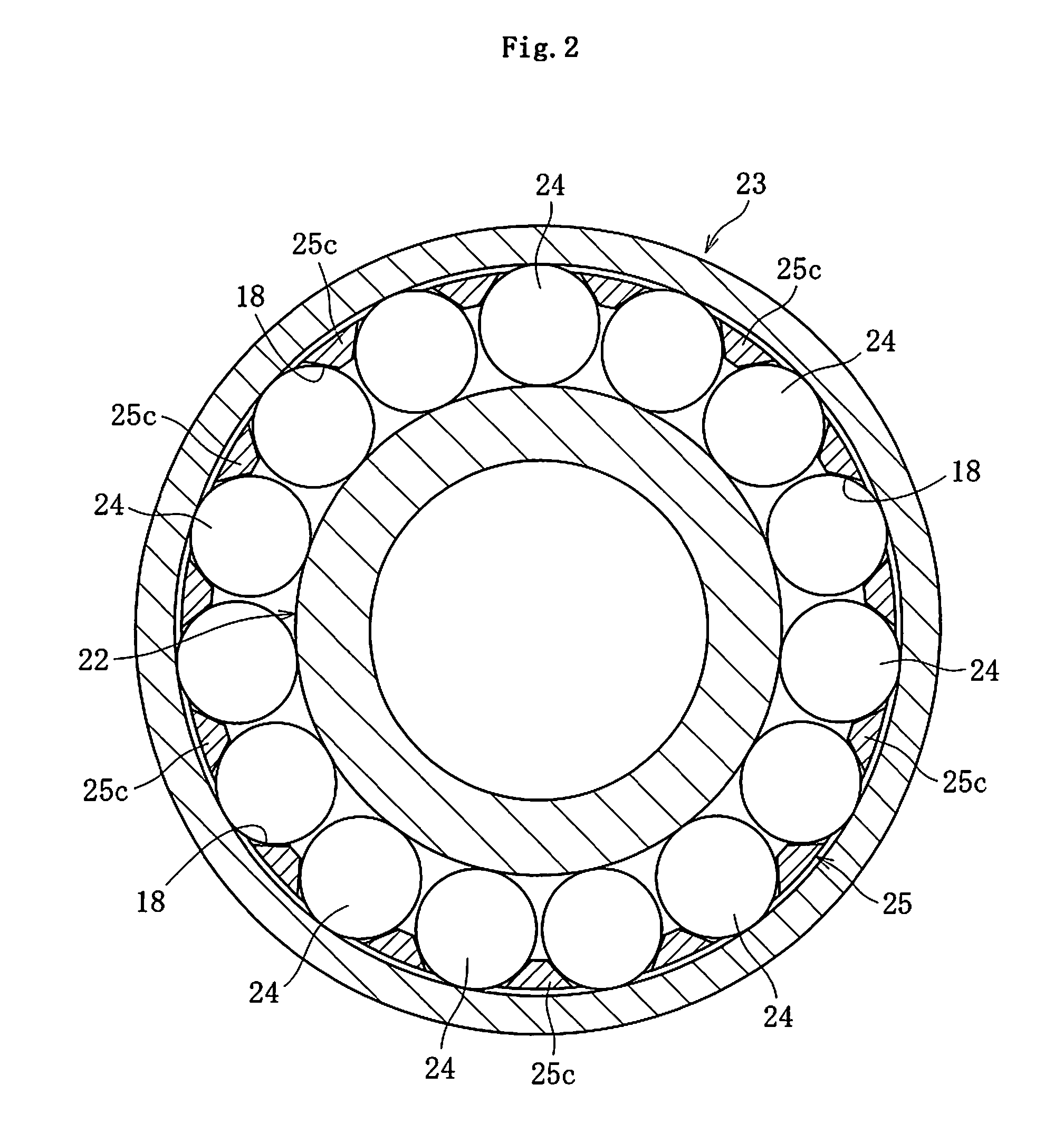Tapered roller bearing
a roller bearing and tapered technology, applied in the direction of gearing details, mechanical equipment, gearing surfaces, etc., can solve the problems of inability to expect long-term fretting suppression effect, favorable, contact surface wear, etc., to prevent occurrence of fretting, and suppress occurrence of fretting
- Summary
- Abstract
- Description
- Claims
- Application Information
AI Technical Summary
Benefits of technology
Problems solved by technology
Method used
Image
Examples
example 1
[0065]Sample products were manufactured with various changes made to the ratio of dynamic load rating to static load rating. The occurrence of fretting in each sample product was examined. The results are shown in the following Table 1. In sample a in Table 1, Cor=35kN, Cr=35kN, and Cor / Cr=1.0. In sample b, Cor=45.5kN, Cr=35kN, and Cor / Cr=1.3. In sample c, Cor=49kN, Cr=35kN, and Cor / Cr=1.4. In sample d, Cor=52.5kN, Cr=35kN, and Cor / Cr=1.5. Each sample has two types of rollers, standard rollers (not processed with MoS2) and MoS2 rollers (processed with MoS2). The standard rollers and the MoS2 rollers in the sample a, and the standard rollers in the sample b are conventional products. The standard rollers and the MoS2 rollers in the other samples c and d, and the MoS2 rollers in the sample b are products of the present invention. In the ordinary conventional products, Cor / Cr<1.3.
TABLE 1Maximum contactOccurrence of frettingCor / Crsurface pressureStandard rollerMoS2 rollera1.02300 MPaYes...
example 2
[0068]Sample products were manufactured with various changes made to the outer ring raceway surface angle (2α). The occurrence of fretting in each sample product was examined. The results are shown in the following Table 2. In sample e in Table 2, α=12.5°. In sample f, α=15.0°. In sample g, α=17.5°. In sample h, α=20.0°. In this instance as well, each sample has two types of rollers, the standard rollers and the MoS2 rollers. The standard rollers and the MoS2 rollers in the sample e, and the standard rollers in the sample f are conventional products. The standard rollers and the MoS2 rollers in the other samples g and h, and the MoS2 rollers in the sample f are products of the present invention. In the ordinary conventional products, α≦17° to minimize space and the like.
TABLE 2Maximum contactOccurrence of frettingAsurface pressureStandard rollerMoS2 rollere12.5°2300 MPaYesYesf15°2200 MPaYesMildg17.5°2100 MPaMildNoh20°2000 MPaNoNo
[0069]As is clear from Table 2, the maximum contact su...
example 3
[0071]Sample products were manufactured with various changes made to the ratio of the roller diameter (DW1) to the roller length (L). The occurrence of fretting in each sample product was examined. The results are shown in the following Table 3. In sample i in Table 3, L=10 mm, DW1=8 mm, and L / DW1=1.25. In sample j, L=11.2 mm, DW1=8 mm, and L / DW1=1.40. In sample k, L=15.5 mm, DW1=10 mm, and L / DW1=1.55. In sample 1, L=15.3 mm, DW1=9 mm, and L / DW1=1.70. In sample m, L=18.5 mm, DW1=10 mm, and L / DW1=1.85. In sample n, L=115 mm, DW1=7.5 mm, and L / DW1=2.00. In this instance as well, each sample has two types of rollers, the standard rollers and the MoS2 rollers. The standard rollers and the MoS2 rollers in the samples i, j, and k, and the standard rollers in the sample 1 are conventional products. The standard rollers and the MoS2 rollers in the other samples m and n, and the MoS2 rollers in the sample 1 are products of the present invention. In the ordinary conventional products, L / DW1<1...
PUM
 Login to View More
Login to View More Abstract
Description
Claims
Application Information
 Login to View More
Login to View More - R&D
- Intellectual Property
- Life Sciences
- Materials
- Tech Scout
- Unparalleled Data Quality
- Higher Quality Content
- 60% Fewer Hallucinations
Browse by: Latest US Patents, China's latest patents, Technical Efficacy Thesaurus, Application Domain, Technology Topic, Popular Technical Reports.
© 2025 PatSnap. All rights reserved.Legal|Privacy policy|Modern Slavery Act Transparency Statement|Sitemap|About US| Contact US: help@patsnap.com



